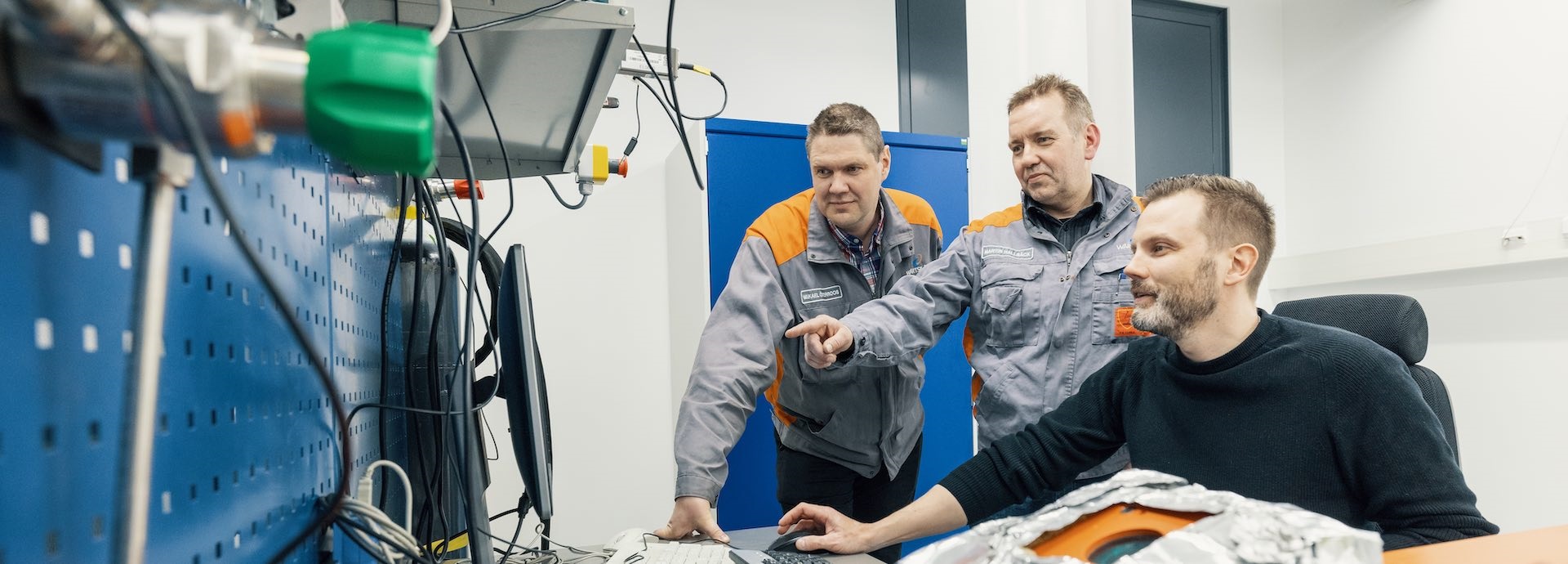

Wärtsilä is set to inaugurate its next-generation Technology Hub, an integrated centre of research, product development, and production June 1st in Vaasa, Finland. The centre will be an ecosystem for co-creation with the aim of accelerating the creation of sustainable solutions for the Marine and Energy sectors.
Functioning both locally and globally, STH will act as a cradle for innovations created together with external stakeholders, such as Wärtsilä’s customers, universities, and start-ups. A concrete example of this is the Partner Campus, where new sustainable ideas are innovated, tested, and validated daily. The Partner Campus is not just a physical place though. It is also a model for co-creating new business solutions.
“It’s a new way of thinking that promotes collaboration and sharing of resources,” describes Jari Hyvönen, General Manager, Advanced Concepts, Research & Technology Development, Marine Power Supply, Wärtsilä.
“To build a 100% renewable energy future, we need to collect and develop all the pieces in the puzzle together. Piece by piece, we’re creating better solutions and building that future.”
A consortium of stakeholders
The Partner Campus community is a network where innovation, risks and data are shared along with expertise. The facilities and the network itself offer Wärtsilä’s partners the opportunity to conduct testing and do projects that wouldn’t otherwise be possible.
A great example of this is Wärtsilä’s longstanding collaboration with Lund University, which has helped bring many interesting research projects to the appropriate test facilities.
“Right now we’re doing rig testing to study ignition quality and spark plug wear at the ProtoZone area of the Partner Campus,” says professor Per Tunestål, Director of the KCFP Engine Research Center at Lund University, who is overseeing the project.
To be able to test our new product prototypes in the right environment is vital. And through dialogue, we can find the way to the optimal solution.
This project includes a large consortium of diverse partners with a focus on engine and vehicle OEMs. Besides Wärtsilä and Lund University, nine other companies are involved in the research conducted by KCFP, with the Swedish Energy Agency being the main contributor. The other stakeholders are Volvo, Scania, Cummins, Metatron, Convergent Science, Loge, Aurobay, and SEM.
It is SEM’s mission to develop the best ignition system possible, characterised by a robust ignition while keeping the spark plug wear to a minimum. The company is providing the ignition systems for this unique project.
“For us, it is of utmost importance to learn about the specific challenges that our customers meet,” says Jakob Ängeby, Director of Research at SEM. “To be able to test our new product prototypes in the right environment is vital. The end goal is to provide the best ignition system possible for Wärtsilä applications. And through dialogue, we can find the way to the optimal solution.”
Tunestål agrees. “What’s special about this project is that we’re trying to improve ignition quality and reduce the wear of spark plugs at the same time. The goal is to find the spark parameters to provide sufficient ignition quality with the least amount of wear,” he adds.
“Positive results would enable the creation of sustainable solutions that save money, reduce pollution, and increase efficiency.”

The Partner Campus and its facilities, including the ProtoZonea area, enable the testing of different prototypes.
Mapping the lifetime of a spark plug
Hands-on in the project is Anupam Saha, Project Engineer at the KCFP Engine Research Center. He explains further that the main focus of the testing is to gain data that will be used to estimate the total lifespan of a spark plug.
“If we can reduce the erosion that happens during ignition, we can improve the lifespan of the spark plugs and reduce the total cost of ownership in terms of maintenance, labour and replacement costs,” Saha says.
Why is the rig testing done at the Partner Campus facilities? Saha explains that Wärtsilä has a dedicated laser rig with a pressurised chamber, which closely simulates the engine conditions that were needed for the research. Testing will continue at the Partner Campus until June this year and once completed, the results will be analysed for further research purposes.
Saha emphasises that the testing is done on spark-ignited gas engines, which means that even if the results are positive, further research is needed to include different fuel types.
Without the funding and facilities from partners like Wärtsilä, we wouldn’t be able to conduct our research.
“If we consider different fuel types, such as hydrogen or ammonia for instance, the ignition properties also change. More research is needed to tackle these issues, and this is the direction we want to go in our future research,” Saha says.
This trajectory will benefit not only the marine industry but also the automotive industry that focuses on combustion engines using renewable fuels.
Tunestål acknowledges the crucial role Wärtsilä plays in helping realise these future visions.
“Without the funding and facilities from partners like Wärtsilä, we wouldn’t be able to conduct our research,” he emphasises. “We gain a deeper understanding of ignition processes, and the industry partners can use this data to improve their engines. It definitely is a win-win situation,” he concludes.


